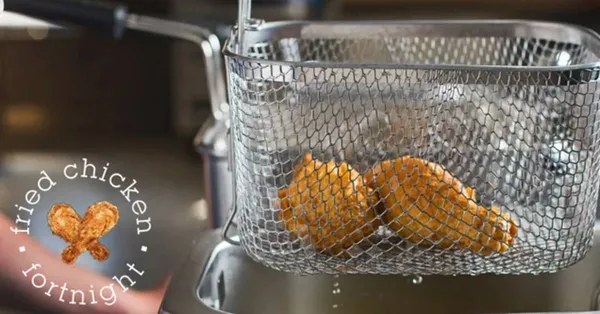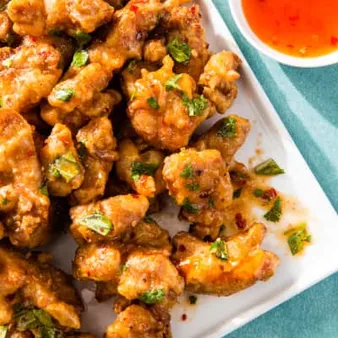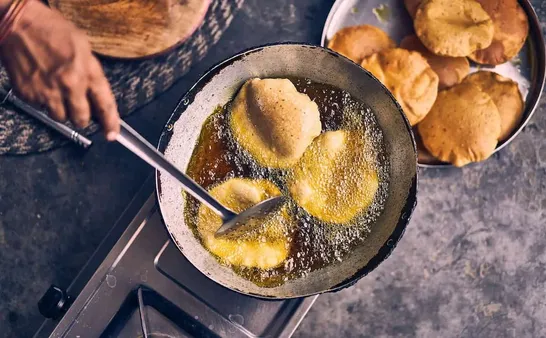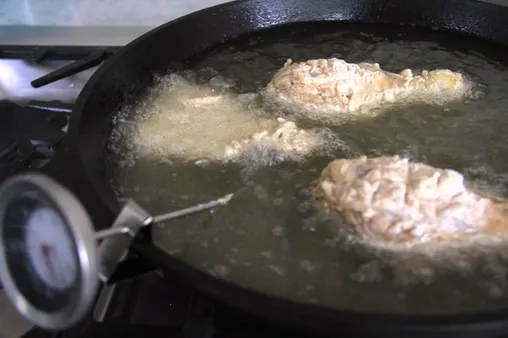Table of Contents
At tauhuichiban, we understand the importance of making the most out of your cooking resources. One common question many home cooks have is whether they can reuse oil after frying chicken. This article will delve into the best practices for reusing cooking oil, ensuring both safety and flavor preservation in your kitchen.
Key Takeaway | Information |
|---|---|
Can you reuse? | Yes, but monitor quality closely. |
Storage tips | - Cool completely before storing - Use a sealed container - Label with date/food type - Store in cool, dark place or fridge |
When to discard | - If smells burnt or rancid - If too dark or has visible debris - After multiple uses or if degraded by proteins like chicken |

Reuse Oil After Frying Chicken
Can You Reuse Oil After Frying Chicken?
Okay, so you just made a delicious batch of fried chicken, and you're left with a pot of oil. Can you reuse it? Well, yes, but with some caveats. Think of it like this: imagine wearing your favorite shirt to play outside. It's still good after one wear, right? You can probably wear it again for something else. Frying oil is similar! One round of frying chicken won't completely ruin it, especially if you're careful. However, chicken leaves behind little bits and pieces that can break down the oil faster. It's like getting those grass stains on your shirt – they make it look a bit worse for wear.

Can You Reuse Oil After Frying Chicken?
How to Properly Store and Reuse Cooking Oil
Alright, so you've got your oil, but now what? You can't just leave it out in the open like a forgotten birthday cake. You gotta treat it right if you want it to last! First things first, let that oil cool down. Imagine your hot oil is like a rambunctious puppy, full of energy, bouncing all over the place. You need to give it a chance to calm down and settle before you store it. Once it's cool, strain it through a fine-mesh strainer or cheesecloth. This is like giving your puppy a bath – you're getting rid of all those messy bits and pieces that could make your oil go bad. Then, find a clean, airtight container – think of it as a cozy little house for your oil. Label it with the date and what you fried in it – that way, you'll remember if it's good for chicken or something else. And finally, store it in a cool, dark place – like a pantry or the fridge. Remember, light and heat are like bullies – they can make your oil go bad faster.
Storage Tips for Reused Oil | Why it's Important |
|---|---|
Let it cool completely | Prevents oil from becoming cloudy or solidifying |
Strain it | Removes food bits that can make oil go rancid faster |
Use airtight container | Keeps air and moisture out, preventing oxidation |
Label with date and food type | Helps you track how old it is and what it's been used for |
Store in a cool, dark place | Protects from light and heat, which can degrade oil quality |

How to Properly Store and Reuse Cooking Oil
When to Discard Used Frying Oil for Safety
Okay, so you've been reusing your oil a few times, and it's starting to look a bit tired. Maybe it's a little darker, or it has a faint smell that's not quite right. Think of it like a worn-out pair of shoes – they've had their fun, but it's time to give them a rest. Just like you wouldn't keep wearing those shoes if they had holes in them, you shouldn't keep using oil that's gone bad. It's not just about taste – it can actually be harmful!
- Smell Test: If your oil smells burnt or rancid, that's a sign it's gone bad. It's like that time you accidentally left a piece of toast in the toaster for too long – you know it's not good anymore!
- Appearance Check: Look for any dark spots, cloudy bits, or floating debris. It's like looking for dust bunnies under your bed – if you see them, it's time to clean up!
- The "Chicken Rule": Remember, chicken is a bit of a tough customer when it comes to oil. It leaves behind tiny bits that can make the oil go bad faster. So, if you've been frying chicken in your oil, it's best to discard it after a few uses. It's like having a messy friend over – they might leave a little bit of a mess behind, but it's best to clean up after them!

When to Discard Used Frying Oil for Safety
Final Thought
Reusing oil after frying chicken can be a practical way to reduce waste in your kitchen, but it's crucial to follow proper guidelines for storage and usage. Always monitor the quality of reused oil by checking its smell and appearance, and never hesitate to discard it if it shows signs of degradation. By doing so, you'll maintain the quality of your fried dishes while also practicing sustainable cooking habits.